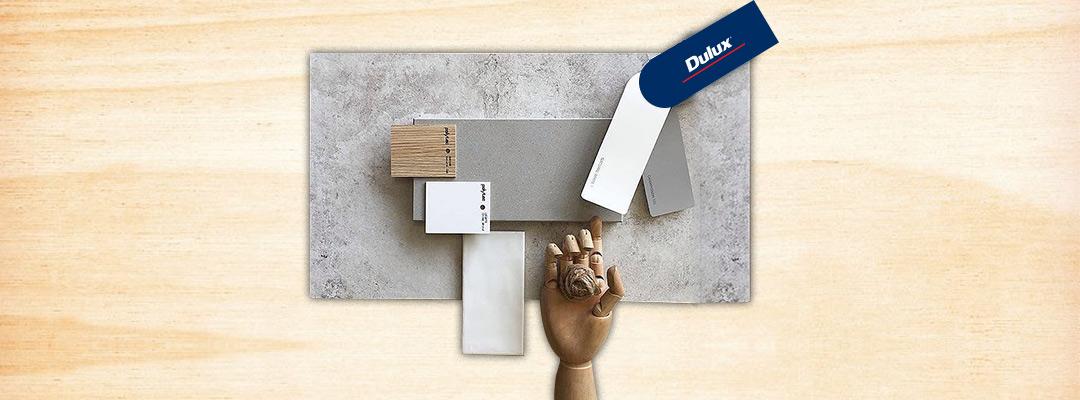
6 Simple steps to finding the perfect kitchen colour palette
It goes without saying that when choosing your kitchen colour scheme, there are options. Too many options, in fact. Even though you might know which colours you prefer, there are an infinite number of shades, tones and hues to choose from. And what about harmony? A colour scheme is not only defined by the colours you choose for your walls, floors and cabinetry – even the colour of your kettle, or potplant, can make (or break) the cohesion in your kitchen.
To create a kitchen that’s magazine-worthy, you’ll have to take a step back and look at your project as the sum of many parts. Below, we take a closer look at what these parts are – and how you should make you decisions.
1. Choose your cabinet colours
There’s a reason that cabinets should be your first consideration when choosing a kitchen colour scheme. Depending on what material and hardware you use, kitchen cabinets typically consume half your kitchen renovation budget, and take up approximately 40% of the visual space in your kitchen. So it would be a good idea to use your choice of kitchen cabinets as the foundation for future colour choices.
What to do: Choose a colour, texture and material that fits your personality, budget and style of your home. Don’t overthink things just yet. Simply select cabinets that speak to you, and move on to step 2.
2. Choose your appliance colours
It’s completely possible that you may opt for built-in appliances. Built in goods will likely be tucked behind your choice of cabinetry, in which case you can move on to step 3. If you’ll go with freestanding appliance, you’ll have to consider how the appliance fronts match with the rest of your cabinets. Your cabinetry cannot be finalised until you know exactly which appliances you intend to purchase.
What to do: When it comes to appliances, your fridge, dishwasher and sink will have the biggest impact on your kitchen colour scheme. You’ll want your appliances to look ‘part of the plan’. To do that, simply choose appliances that complement your cabinet colour scheme. Consider matching white goods with white or light grey cabinetry. Stainless Steel appliances go well with brown hues, vibrant colours and shades of grey. These things might seem obvious at first, but it’s something many people get wrong.
3. Select your countertops
Your choice of kitchen countertops is an important decision for many reasons. Other than practical and budget considerations, countertops are often close to eye-level – occupying a significant portion of your visual space. If there’s no cohesion between the countertops and cabinets, the visual harmony in your kitchen will fall apart.
What to do: When selecting countertops, first eliminate any options that are outside of your budget. Then, consider the colour of your existing kitchen floor. Matching these two colours is a fool-proof way of ensuring good colour coordination. If you intend to upgrade or replace your floors, simply use a sample of your kitchen cabinets to guide you in selecting your countertops.
4. Choose flooring
Often, adjoining rooms of your home will dictate the colour of your kitchen floors. If not, it’s sometimes difficult to know what works and what doesn’t. When selecting a kitchen floor colour, it needs to coordinate well with all the elements you’ve selected so far.
What to do: Start by selecting your material first. Hardwood, tile and laminate floors are all popular choices. A basic rule of thumb is to pick a second dominant colour (your cabinets being the other). A complementary, yet contrasting colour will shape your kitchen. A timeless combination uses classic white cabinets, and warm wood or laminate flooring – with a countertop that alternates between both lighter and darker colours.
5. Choose your wall colour
Oddly enough, kitchen walls are often the forgotten elements when it comes to defining an overall colour scheme. Walls play an imporant role in tying the room together and setting the mood. While walls are generally covered by cabinets, backsplashes and shelving, it’s still a chunk of space that becomes more noticeable when done wrong.
What to do: Select a color that balances well with the floors, cabinets and backsplash. Painting kitchen walls in off-white, cream or dove grey should complement most of your chosen elements, no matter what style you choose. Vibrant colours are also an option, just be sure that your floors and cabinetry have a more subtle palette.
6. Choose hardware colours
Beauty is in the details. Elements like taps, cabinet handles and lighting fixtures will be installed at the very end of your project, but have the potential to put the cherry on the cake of your renovation. While there are no ‘hard and fast’ rules about coordinating hardware colours – it does help to create a space that looks more planned than most.
What to do: When it comes to kitchen colour schemes, just stick with styles and finishes that complement each other. The easiest way of ensuring a streamlined look, is to use one type of hardware material throughout. Take a look at your metal elements – match them up and see them in use with your choice of cabinets.
Creating a flowing kitchen colour scheme might seem like a daunting task at first. Choosing a starting point, and moving your way through all the elements in your kitchen one-by-one will ensure you end up with a beautiful, cohesive space.
For more design inspiration aswell as material and hardware selections click here to visit our partners websites

Recent Comments